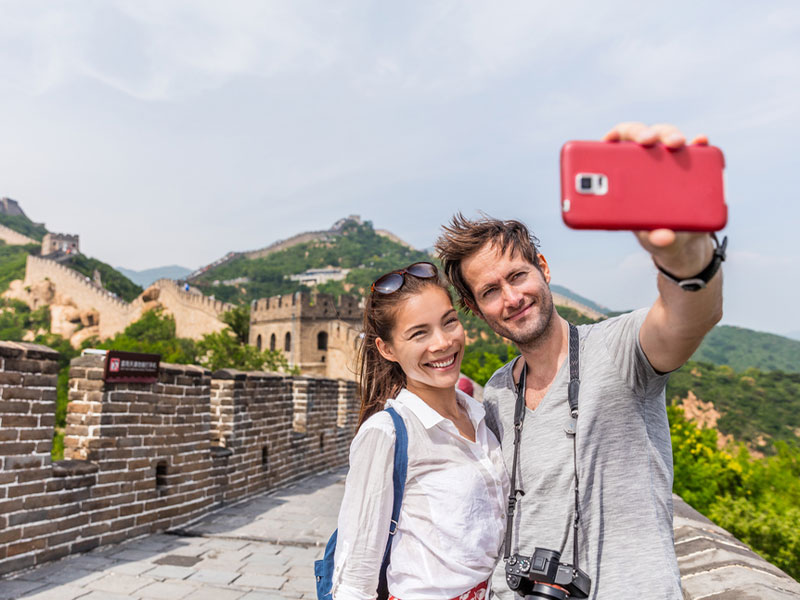China, with the official name of the People’s Republic of China, is the most populous country in the world with more than 1.3 billion inhabitants. This country, which is located in the east of the Asian continent, is administered by the Chinese Communist Party in the form of a one-party system. The capital of this country is Beijing. In this post, we will be focusing on the top tourist attractions of China.
List of Top Tourist Attractions in China
The People’s Republic of China with about 9.6 million square kilometers is the second largest country in terms of land area. Ancient Chinese Civilization is one of the oldest civilizations in history that flourished on the fertile banks of the Yellow River, which flows in the plains of North China. Here’s a list of the top tourist attractions of China:
1) Beijing
Beijing is the capital of the People’s Republic of China and one of the most populous cities in the world. Beijing is the second most populous city in China after Shanghai and the political, cultural, and educational center of the country. Beijing International Airport is the second busiest airport in the world in terms of passenger traffic.
The history of the city reaches three thousand years ago and it has been the capital of China for most of the last eight centuries. There are few cities in the world that have remained a political and cultural center for such a long period of time.
Since Beijing has a great history and is the capital of China, there are many tourist attractions you can find in the city. Undoubtedly, the most important of them is the old city walls that were built around the city once upon a time.
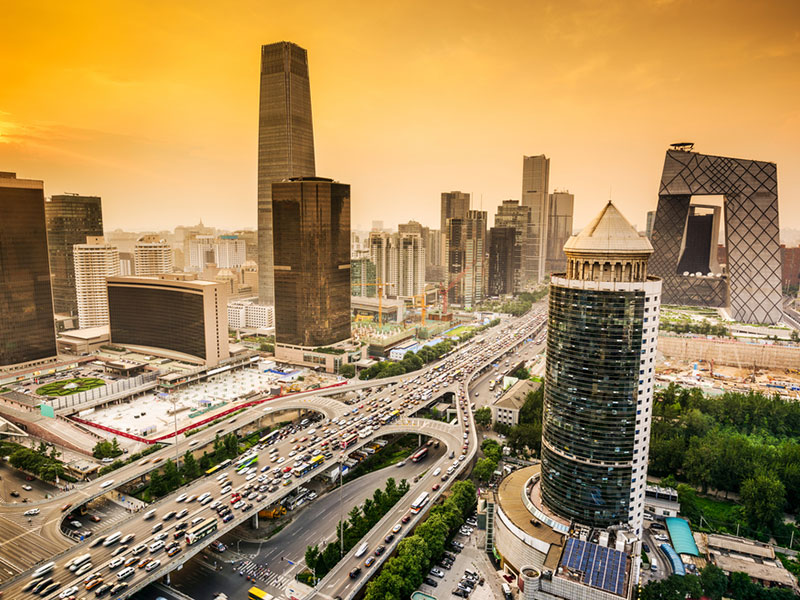
2) Forbidden City
The Forbidden City is considered to be the largest and most complete collection of wooden architecture in the world and one of the most popular tourist attractions in China. The construction of the Forbidden City began in 1406 AD by the order of Zhu Di, the second emperor of the Ming Dynasty, and it was built within 14 years. Until 1911 AD and the destruction of the Qing Dynasty (almost 500 years), a total of 24 emperors resided in this forbidden city and ruled over China.
Since 1924, visiting this complex as a palace museum was open to the public, and its prohibition was lifted. This rare work with a rectangular building covers an area of about 72 hectares. Its dimensions are 961 meters long from north to south and 753 meters wide from east to west. A wall with a height of 10 meters and a ditch with a width of 52 meters surrounds the complex. The wall has a gate on each side. On the south side is the “Meridian Gate” and on the north side is the “Gate of Divine Might”. The walls are thick and designed to withstand the artillery fire of that time.
The Forbidden City was built entirely according to the ceremonial system of feudal dynasties and class principles. The overall plan, size, architectural style, color, and decorations all represent the privileges of the royal family and the aristocratic hierarchy. The three palaces of this complex, namely Taihe Palace, Zhonghe Palace, and Baohe Palace, which attract the most attention, were the place where the emperors exercised their imperial power and held magnificent ceremonies.
Taihe is the center of the entire Forbidden City and the emperor’s golden royal throne can be seen in this palace. This palace has the most luxurious architecture in the forbidden city and was built in the north of the square on a white marble platform with an area of 30,000 square meters and a height of 8 meters. Its height is 40 meters, which is the tallest building in the forbidden city.
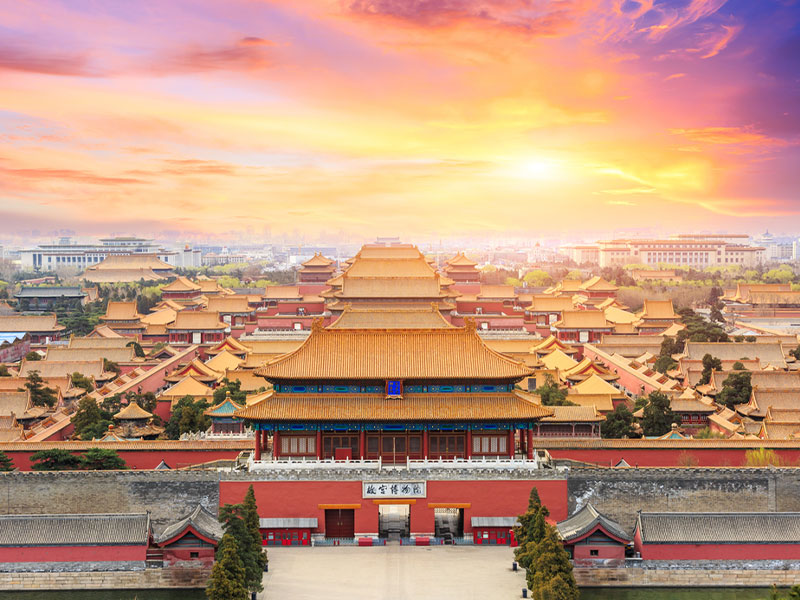
3) Summer Palace
Beijing Summer Palace, built in 1750, is a masterpiece of Chinese garden design and one of the most famous tourist attractions of China. In this area, the natural landscape of hills and waters is combined with man-made entrances, temples, bridges, and palaces, creating a harmonious complex that has high aesthetic values. The ancient complex of Beijing Summer Palace has been registered as a UNESCO World Heritage since 1998.
Longevity Hill (with a height of about 60 meters) and Kunming Lake (which makes up about two-thirds of the total area of the complex) are the most important natural elements of the Beijing Summer Palace complex. This complex, which has a total area of nearly 3 square kilometers, contains about 70 thousand square meters of various buildings.
The Summer Palace complex is located on the outskirts of Haidian District, 15 kilometers from the center of Beijing. The initial core of this complex was built during the reign of the Jin dynasty (1115-1234) and expanded during the reign of the feudal emperors of this dynasty. But it was during the reign of the Qing Dynasty (1644-1911) that this complex took its current form and turned into a luxurious royal garden that provides entertainment for the royal families.
The Beijing Summer Palace complex, like many other Chinese royal gardens, consists of three hills and five gardens. The artisans and artists who took part in the construction of this collection created original landscapes and mansions that are an example of the peak of Chinese architecture and art at that time, following the example of nature.
4) Temple of Heaven
The Temple of Heaven is next on our list of top tourist attractions of China. This temple is considered to be the largest and most complete ancient altar in China. Every year, the kings of the Ming and Qing dynasties held magnificent ceremonies in this temple for the blessing of the sky and abundant crops. In China, the king is called the son of the sky and rules over the country with this identity. Therefore, holding the sky sacrifice ceremony has been the king’s special authority.
The Temple of Heaven is located to the south of the forbidden city and its area is 4 times the size of the forbidden city. The southernmost wall of the four-cornered Temple of Heaven is the sign of the earth and the northernmost side of the half-circle wall is the sign of the sky. This design is based on the ancient Chinese idea of the round sky and the four-cornered earth. The Temple of Heaven is divided into an inner and an outer temple and is surrounded by two round walls. The main buildings are arranged in a line from the south to the north of the inner temple.
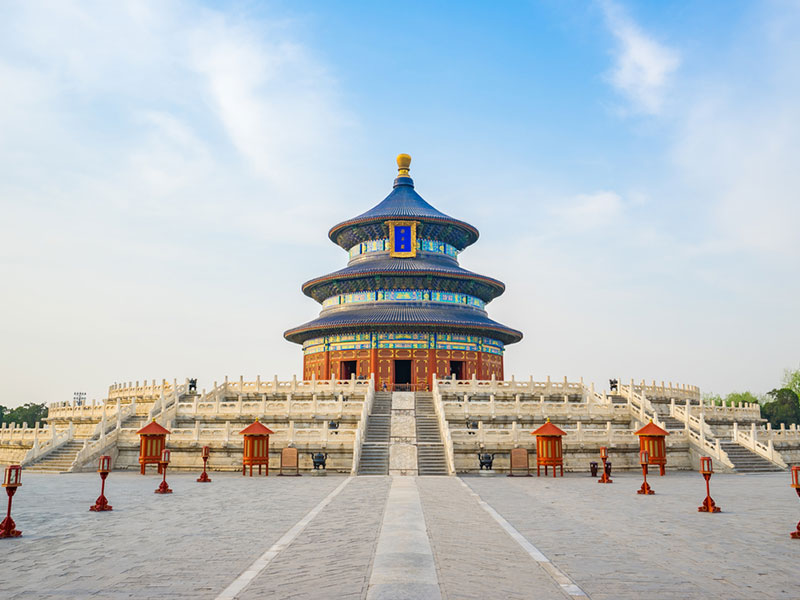
5) Great Wall of China
The Great Wall of China is a masterpiece of human architecture. Like a huge dragon, this wall has passed through the deserts, grasslands, mountains, and plateaus from the west to the east of China. This wall was built about 2700 years ago. This huge wall was originally built in the states of “Yan”, “Zhao” and “Qin” in different seasons of the year against the invasion of hostile troops, like a defensive wall and an impenetrable barrier, to prevent the attacks of wild tribes.
In building this wall, countless materials and human force, including soldiers, prisoners, and native people, have been used. The Great Wall of China is a symbol and a clear sign of the wisdom, perseverance, and hard work of the Chinese people and one of the most famous tourist attractions of China.
One of the interesting points in the construction of this wall is the use of rice flour in the structure of its bricks. In order to give more fortify the bricks of the wall, the architects and designers of the Great Wall of China added rice flour to its ingredients to increase the durability and strength of the wall.
Most of the wall that we see today was built during the Ming Dynasty. which starts from the Shanhaiguan Pass in the east of China and continues to the Jiayuguan Pass in the west, going through the provinces of Liaoning, Hebei, Beijing, Tianjin, Shanxi, Inner Mongolia, Ningxia, Shaanxi, and Gansu.
The Great Wall of China is considered one of the seven wonders of the world. This wall extends 7000 km on the geographical map of China. In the history of two thousand and twenty years of China, the rulers of different eras built the Great Wall of China until the length of the wall reached 50 thousand kilometers. This is the equivalent of going around the earth!
6) Tiananmen Square
This square is located in the center of the city of Beijing and is known as the largest urban square in the world with an area of 440,000 square meters (about 109 hectares), which can provide houses for 10,000,000 Chinese people.
This square is decorated with thousands of beautiful flowers and the dance of the Chinese flag in the wind and among the flowers is something that no tourist should miss as one of the top tourist attractions of China. This large square is surrounded and decorated with many monuments which attract thousands of tourists every day.
In the center of this square, the 37.94-meter monument of the country’s heroes made of granite in memory of China’s national heroes dazzles the eyes of every viewer. The famous Tiananmen Tower or the Forbidden Building in the south of this square was built in 1417 during the Ming Dynasty (1368-1644) when, according to a statement, ordinary people were forbidden to enter and visit this palace.
Also, to the south of the square, there is the memorial hall of Mao Zedong, the first president of China, who is highly respected and admired by the Chinese people. This building was built in 1977 and has 3 different parts, including the main hall, the north hall, and the south hall, where Mao Zedong is on public display in a crystal coffin in the main hall
To the east of this square is the National Museum of China, which is a great treasure of the history of the culture and civilization of China. This museum contains more than 3,000,000 million historical works and 4,500 articles and historical documents that show the history of the brilliant culture and civilization of China and is another one of the top tourist attractions in China in its own turn.
To the west of this square is the Great Hall of the People of China, which was built in 1959 and covers an area of about 170,000 square meters. This building is called the Great Hall of the People because it is the place of the Chinese People’s Congress. This building is a magnificent building where, upon entering, the long white marble columns with large crystal chandeliers dazzle the eyes of every viewer.
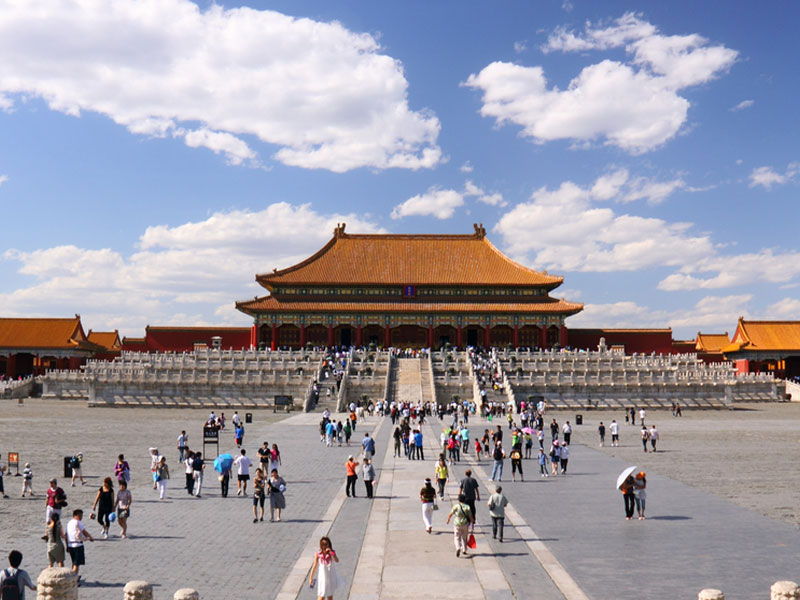
7) Ming Tombs
Next on the list of the top tourist attractions of China ate the Ming Tombs. These tombs are located in the Changping area, 50 kilometers northwest of Beijing. They contain a collection of 13 tombs of Ming Dynasty kings (1644-1368), which includes a total of 7 temples for concubines and A grave for eunuchs, which has turned this area into one of the most famous temples in the world that is visited by millions of tourists every year.
These thirteen tombs are completely similar and identical in terms of architectural style and decorations, and the only difference is their size. The largest of them is Changling Temple and the smallest is Yongling Temple. All these temples are connected to each other by a path called the Sacred Way. The oldest temple is Chang’s Tomb, which was built in 1409 for four years, and is the burial place of Zhu Di, the third emperor of the Ming Dynasty. This temple has 3 courtyards. whose floors and halls are decorated with glazed tiles. This building is one of the largest wooden buildings and temples in China.
Dingling tomb is the only tomb in this complex that has been subjected to archeological operations, and the obtained works are also displayed in the same place. In the back of this temple, there is an underground corridor through which visitors can enter a part of the palace and visit its historical monuments.
